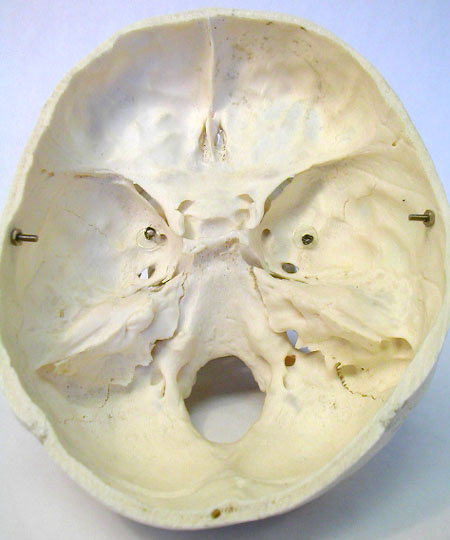 |
| This gave me a good laugh. |
I'm a big advocate for helmets. I study psychology in school and I learn a lot about brain damage and its impact on us. Helmets are a necessity They do quite a bit to save your brain and your head. You are your brain, without it you cannot function, so I say, lets all wear helmets!
The main thing that helmets do is they keep a closed head injury from becoming an open head injury. It is obviously preferable to keep your brain inside of your head rather than spread on the pavement. Especially because the consistency of a brain is like pudding, and it will not stay solid for long, but will "melt" out onto the pavement. Wear a helmet, keep your brain inside your head, and keep things from entering your brain.
Even with a closed head injury there is some damage that can be done. Your brain is a very mushy substance that floats in a liquid inside of your skull. When your head hits the pavement it has been accelerating. It hits the ground and stops quite suddenly. Sadly, your floating brain takes longer to stop. It will continue to accelerate until it hits the inside of your skull, this is called the coup. It will then bounce off your skull, move backwards, and then hit the other side, this is called the contre-coup. Both of these impacts can cause severe damage to your brain known as Tramatic Brain Injury, or TBI.
 |
| Coup and Contrecoup |
TBI is the leading cause of death and disability for children and adolescents. There are roughly 2,685 deaths a year due to TBI, and at least 37,000 hospitalizations with 435,000 emergency room visits. The most incidence of hospitalization and death occurs from ages 14-18 years old. There are different types of TBI, such as contusions which is bleeding in the brain. Or concussions which is similar to a contusion but it includes the loss of consciousness. Depending on the severity of these one may develop mild to severe TBI. Loss of many forms of functioning can occur.
Along with concussion and contusion is Axonal Shearing. The inside of your skull is not smooth. My Behavioral Neurobiology teacher gave the good example that it is shaped like a skate park. Ramps, bowls, dips and hills. There are quite a few ridges inside your skull. When your skull rotates quickly and then stops even quicker, like hitting your head on the ground, your brain does not stop rotating and these ridges literally "shear" or tear through your brain matter, causing bleeding and severe neural damage.
 |
| Inside the top of your skull. Usually there are no screws sticking into your head so...ignore those. Pay attention to the ridges instead. |
How does wearing a helmet help to prevent this? Well, most of this damage is cause by your speeding skull being stopped suddenly, while your brain takes a moment longer to slow down. Helmets help lengthen the time it takes to slow your skull down making the deceleration less damaging. As your head hits the ground, the foam in your helmet is crushed by your head. As it crushes it slows your head down gradually, rather than all at once. This causes the damage to be less severe, and can very well save your life, if not your neural functioning.
This is why you should buy a new helmet if you get into a crash. The foam has been crushed and will not work the same again. It is safer to buy a new helmet.
Wear a helmet, just do it.
2 comments:
I'm a big advocate for helmets. I study psychology in school and I learn a lot about brain damage and its impact on us. Helmets are a necessity ... longboardhelmet.blogspot.com
Alzheimer's is a disease that mainly affects the people of over 65 years. Forgetting recently learning things is the main symptom of this disease. The symptoms of this disease develop day by day. Stem cell Alzheimer's treatment
Post a Comment